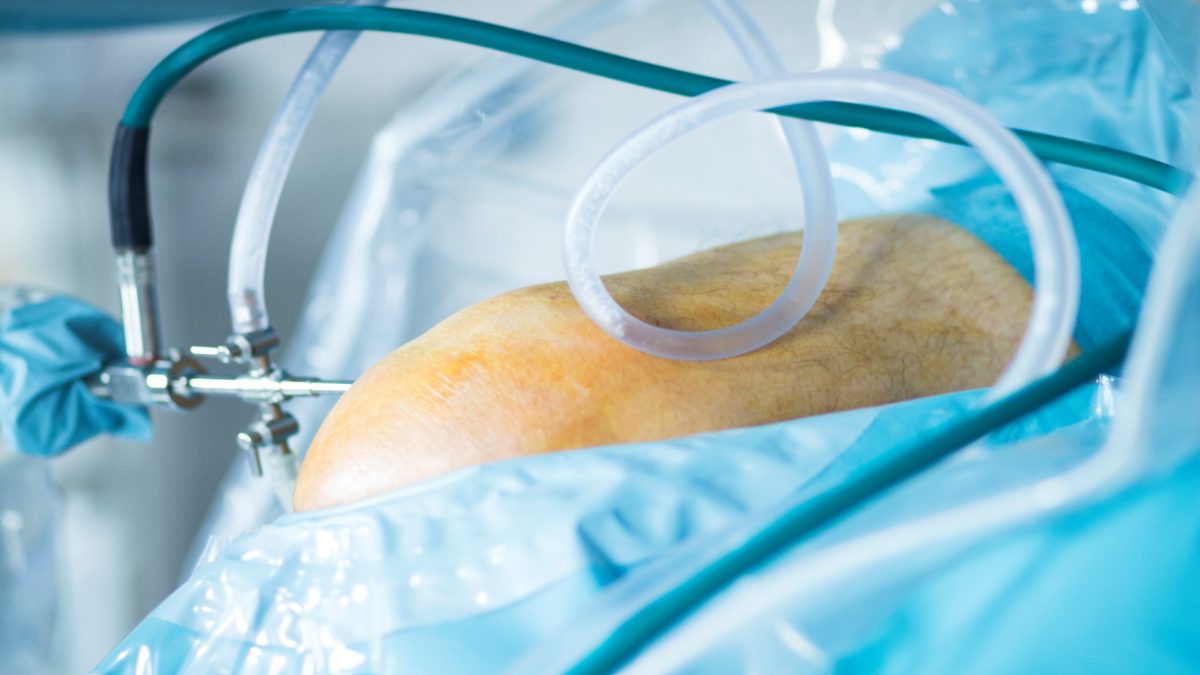Torn meniscus treatment
Treatment of a torn meniscus depends on where the tear is located, how big it is, and what type of tear occurred.
The outer portion of the meniscus is richly supplied with blood. If a meniscus tear occurs in this area, it may heal well without treatment, or sometimes tears in this area are surgically repaired. A longitudinal meniscus tear is one example of a tear in the “red zone.”
The inner area of the meniscus is not supplied with blood vessels. This ” white zone” lacks the nutrients that blood supplies and which are needed for healing. Meniscus tears here, often in worn-out cartilage, cannot heal. Complex meniscus tears in the white zone are usually surgically debrided or cut away because the torn sections won’t heal.
Other factors to be considered when torn meniscus treatment is planned are the patient’s age, any associated injury or damage, and the activity level of the patient.
Conservative treatment
If a meniscus tear occurs on the outer portion of the meniscus and it is pretty small, surgery may not be needed. If the knee joint is stable and the pain and other symptoms resolve, conservative treatment may be all that is needed. Non-surgical treatment of a torn meniscus may include taking nonsteroidal anti-inflammatory drugs (NSAIDs) like ibuprofen, aspirin, or naproxen to relieve pain and reduce inflammation, and typically, the RICE protocol is recommended:
- Rest. The “R” in RICE stands for rest. Patients are encouraged to stop doing the activity that caused the meniscus tear. Crutches might be recommended to help patients keep from bearing weight on the affected knee.
- Ice. The “I” in RICE stands for ice. Cold applications are recommended for about 20 minutes, several times throughout the day to the area affected by the meniscus tear. Ice should not be applied directly to the skin. Protect the skin with a thin towel or a t-shirt.
- Compression. The “C” in RICE stands for compression. Wrapping the knee affected by a meniscus tear with an elastic bandage can help support it and can help reduce swelling and inflammation.
- Elevation. The “E” in RICE stands for the elevation of the leg affected by a torn meniscus. In order to be most effective, the leg needs to be elevated above the level of the heart.
Torn meniscus surgery
If a meniscus tear causes the knee to lock up and prevents it from straightening, torn meniscus surgery may be needed to restore function. In cases of a less severe torn meniscus, surgery is sometimes recommended to repair or remove the tear if it is not resolving on its own. Arthroscopic surgery allows surgeons to perform corrective procedures without making large incisions into the knee joint.
PARTIAL MENISCECTOMY
In a partial meniscectomy procedure, only the torn or damaged portion of the meniscus is removed. This is preferred over removing the entire meniscus to repair a meniscus tear. The meniscus job is to absorb shock, and it also helps the knee retain its stability. In addition, without the meniscus, the knee is more prone to arthritis. Therefore, only in cases of severe damage to the meniscus is it completely removed.
MENISCAL REPAIR
Doctors would rather repair a meniscus tear than remove even a small section of the meniscus. Young patients who have recent injuries are usually good candidates for surgery to repair a meniscus. When meniscus tears occur in older individuals due to degeneration, the repair is not as successful. A meniscus tear is typically repaired using arthroscopic surgery. Sometimes the tear is sewn together with sutures. Other times, suture anchors, which are special surgical fasteners, are used to hold the edges of the meniscus tear together.
MENISCAL TRANSPLANTATION
Experimental procedures are being used to replace a meniscus that is damaged. One of these procedures involves transplanting a tissue, or an allograft, from the body of another person. Further research is needed to determine if these procedures for the torn meniscus are successful over an extended period of time.
Rehabilitation
Following surgery for a meniscus tear, the knee is typically immobilized in a brace or a cast. If the meniscus tear was repaired, the patient usually needs to use crutches for 3 to 4 weeks to keep from bearing weight on the affected extremity. When healing is complete, exercises are typically recommended to help restore strength and mobility to the knee. Exercises following a meniscus tear usually start with gentle movements to improve motion, and strengthening exercises are added gradually. Physical therapy may be recommended, but most exercises will be done at home. Patients who have surgery to repair a meniscus tear typically require about three months for rehabilitation, while those with a meniscectomy take about a month to recover.
















Leave a Reply
You must be logged in to post a comment.